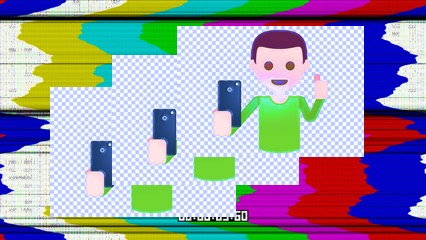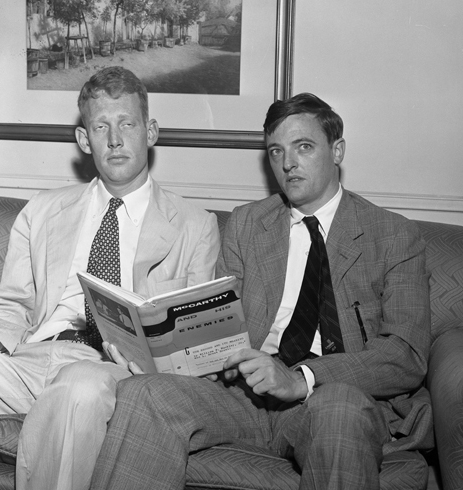We Live in an Anti-Society

An Untimely Review of Joker.
I finally watched Joker, the much-hyped, and now award-winning, ersatz superhero movie which had the Twitterati up in arms back when it first came out. It recently won two Golden Globes—one for the best performance by an actor in a motion picture, which went to Joaquin Phoenix in his role as the titular character, and one for the best original score. It was nominated for two more: best motion picture and best director, the second of which it arguably ought to have won.
And for good reason: Joker is great cinema (though “enjoyable” is the wrong word for the experience of watching it, which felt something like what I imagine wandering through New York City for months on end must feel like, compressed into a tidy 122 minutes of impeccably acted and beautifully staged slow-burn madness).
What interested me most, however, is the villain of the film: not Arthur Fleck, the protagonist slowly descending into madness; certainly not Thomas Wayne or Robert de Niro’s character, the talk-show host Murray Franklin—both of whom, while immensely significant to the plot itself, have limited screen time and are presented, at worst, in shades of moral grey. The villain I mean is the general malaise which the movie depicts, of which all the sordid events and deranged characters of Joker are but symptoms.
Because the problem in Joker’s 1981 is not, contra the statement popularly attributed to the film’s title character (though he never actually said it) that we live in a society. In fact, the problem is exactly the opposite: that we live in something which, whatever it may be, is not a society at all.
Urban Villainy
Take, for example, one of the film’s most memorable visual motifs: the staircase down which Arthur Fleck, in full Joker makeup, dances toward the climax of the film. The staircase, which has since inspired entire terabytes of memetic discourse and become a place of pilgrimage irl, is actually featured multiple times in the movie before the iconic scene. Twice (by my count) Arthur Fleck is seen walking up, its near-infinite stairs looking, from the perspective of both the viewer and the failed comedian, like some sort of Sisyphean nightmare mountain. I’ve walked up those stairs (they’re in the Bronx) and I can assure readers that the experience feels much the same. Having to walk them on a daily basis would probably drive me mad, too.
The infamous staircase isn’t the only time Joker utilizes bad urbanism to create a mood of bleakness, hopelessness, and even mental illness. The building in which Fleck lives with his aged, delusional mother is another example. Their apartment is where much of the psychological breakdown at the center of the film actually occurs: it’s there that Arthur, with only his mother and his television for company, begins to nurse delusions of appearing on Franklin’s TV show; it’s there that his already-mad mother spends her life mailing letters to billionaire Thomas Wayne, under the tragic delusion that they were once lovers; and it is there, in the run-down building’s broken-down elevator, that Arthur, starved for meaningful personal contact, starts to imagine himself in a relationship with Sophie, a woman who lives down the hall (incidentally the only parental figure in the film whose death Arthur doesn’t cause).
The movie heavily implies that all these delusions not only take place in the apartment building but are directly engendered by it. “If he [Thomas Wayne] knew how I was living, if he saw this place, it would make him sick,” Penny Fleck tells her son early in the movie. “Same depressing office,” reads one of the setting descriptions in the script.
Several of the scenes in Joker take place in an actual mental hospital, and the only thing that stands out is how similar it is to every other setting in the film. The bleakness of modern city dwelling, the movie seems to be telling us, with the physical and social isolation it engenders, is enough to drive anyone mad.
Arthur’s isolation, of course, isn’t only physical. His lack of a father figure is the driving force of the entire movie. Desperate, he seeks out replacement fathers in Thomas Wayne, a billionaire running for mayor on a Bloombergian faux compassion-for-the-plebs platform, and in Murray Franklin, the genial talk show host brilliantly played by Robert de Niro, in whom Arthur sees a compassion that he was never shown as a child.
Of course, both men turn out to be disappointments: Wayne punches Fleck in the face after vehemently denying paternity, while Franklin mocks Arthur’s compulsive laughter and lousy attempts at comedy on air, inviting him on the show only to mock him further. Both men, of course, get what’s coming to them: Fleck shoots Franklin during the movie’s climax, while Wayne and his wife fall victim, as the Batman mythos dictates they must, to an anonymous thug inspired by Fleck during the orgy of violence that engulfs the city in the film’s final act.
Later in the movie it’s also implied that Fleck’s childhood abuse at the hands of his mother’s boyfriend may have set him on the path toward the horrors of the film’s events. One thing is clear: Joker takes place in a post-familial society, and its events spin directly out of that reality. In all this, Joker is no fantasy.
Joke’s on Us
Aside from the movie’s excellent depiction of the maddening effects of contemporary urban life and its near-Houellebecqian depiction of a society ravaged by the Sexual Revolution (one can almost imagine the Golden-Age-style tagline: “Not a dream! Not a hoax! Not an imaginary tale! A story ripped straight from the most recent sociological studies!”), there is the matter of the movie’s economics, which, it must be said, are portrayed in a manner markedly more heavy-handed than either the film’s urbanism or its critique of social atomism.
The director, Todd Philips, can hardly be blamed for this, of course: economics are basically the only aspect of urban society up for criticism these days. “They’ve cut our funding,” Arthur’s social worker tells him at the beginning of the film. “We’re closing down our offices next week. The city’s cut funding across the board. Social services is part of that. This is the last time we’ll be meeting….They don’t give a shit about people like you, Arthur. And, they really don’t really give a shit about people like me either.”
A bit overwrought, yes, but it gets the point across nicely. It’s no accident that the movie is set in ‘81, when Reagan and Thatcher were in power, making exactly the sort of budget cuts depicted in the film. One suspects that’s the main reason the film is set then, of course—that and the excellent shirt collars and the now-quaint taxicabs. If nothing else, Philips has a gift for making a period seem so nostalgic which was actually, by his own stagelights, unremittingly bleak and grim.
Then, of course, there’s the matter of Arthur’s sex life, or lack thereof. Throughout the movie he engages in a romantic dalliance with his neighbor from down the hall (the only female he even speaks to, other than his mother and a social worker), which is, toward the end of the film, revealed to be a delusion. It was this Joker-as-incel subplot that media outlets panicked over, worrying that, as in the film itself, Arthur’s breakdown would inspire admiring copycats.
All of this brings us to the question: if the world Todd Philips presents us in Joker, for all its 80’s aesthetics, is actually not that far off from the one many of us live in today, how come Arthur Fleck didn’t inspire a real-life revolt of the incel masses?
The answer, I think, is painfully simple: what Arthur Fleck had that his real-world analogues don’t is what the Greeks called thymos: spiritedness, passion. Joker is a story of a man who rises up against a system that doesn’t care about him, that relegates him to the margins of society, that, through sheer bureaucratic ineptitude, elite selfishness, and late-liberal inertia, simply pretends he doesn’t exist. That all is totally realistic. What’s unrealistic is Arthur Fleck’s rebellion against the system and the revolt of the masses he inspires, because the fact is that Americans these days no longer have the thymos necessary to revolt, and even if they did, what have they to fight for?
Even after the searing critique of modern society Joker presents and the media panic about its real-world effects, one bleak, inevitable fact remains: the gamers will not, in fact, rise up.
The American Mind presents a range of perspectives. Views are writers’ own and do not necessarily represent those of The Claremont Institute.
The American Mind is a publication of the Claremont Institute, a non-profit 501(c)(3) organization, dedicated to restoring the principles of the American Founding to their rightful, preeminent authority in our national life. Interested in supporting our work? Gifts to the Claremont Institute are tax-deductible.
The case of CNN.
The minor prophets of conservatism may be past their sell-by date.






